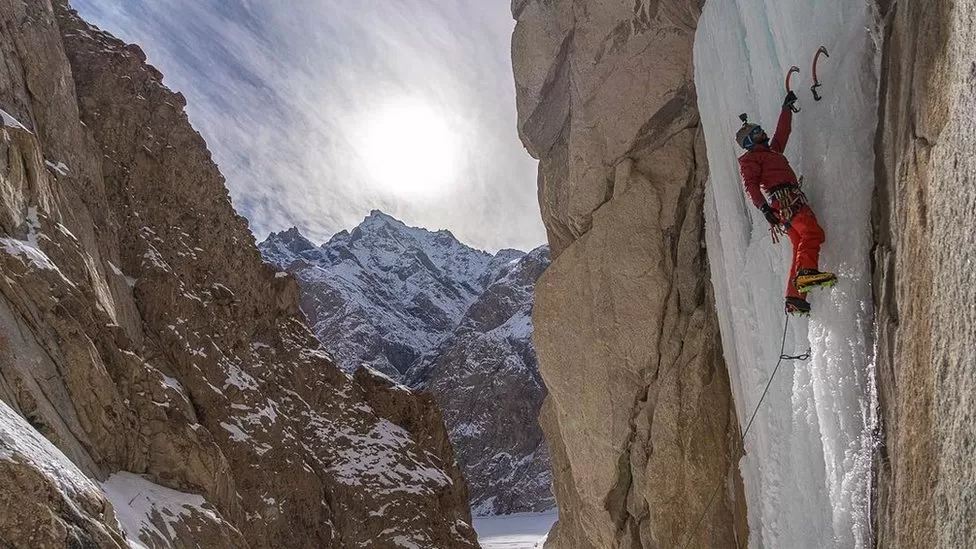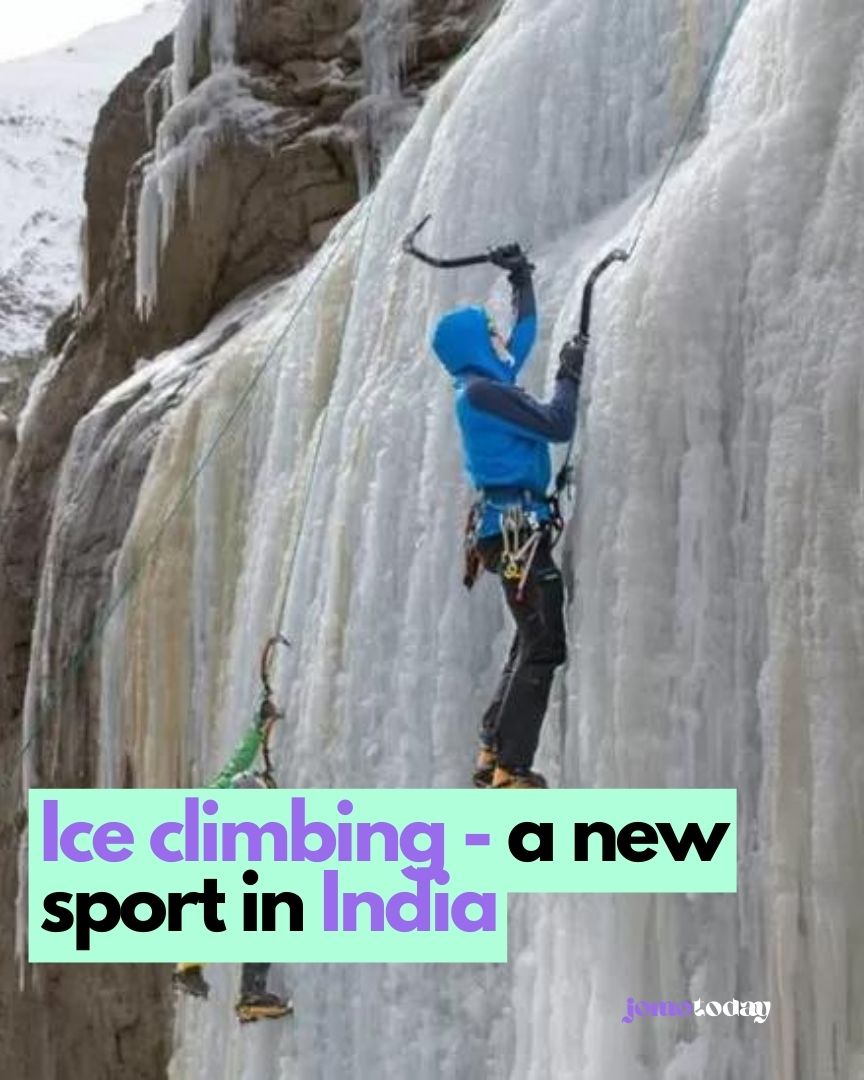Karn Kowshik – Indian ice climber and mountaineer, He is about to climb a frozen waterfall in the Himalayas in India at -25°C (-13°F).
Mr. Kowshik is one of the growing group of adventure sports enthusiasts exploring and popularizing ice climbing in India, which is home to the ice-covered Himalayas.
Ice climbing is climbing frozen bodies of water, such as mountain falls. The ice formations tend to be steep, jagged and brittle, and climbers use ice axes and crampons (boots with metal spikes attached to the soles) to carefully pierce the ice and pull themselves up.
Mr Kowshik, who calls ice climbing an “extreme adventure sport” says, “If you chip off too much ice, sink your axe in too deep, or if a section starts to melt, the entire slab of ice could crumble, sending you crashing to your death.”
Even for climbers accustomed to traversing dangerous mountains, ice climbing is a big challenge because the frozen water is thin and very fragile.

But the sport has been popular in the US and Europe for years, with dozens of ice climbing festivals held each year.
Recently made headlines in India, in 2016, a documentary titled ‘The Fall’ showed Abhijit Singh and Pranab Rawat who climbed two frozen waterfalls in the Spiti region of the Himalayas, chased Media reports at the time praised him for documenting the trek to India’s first frozen waterfall.
Since then, several ice climbing courses (mainly run by climbers like Kowshik) and festivals have appeared in India. A week’s course costs from 30,000 rupees ($360; £321) to 80,000 rupees.
Ice climbing is still slow to gain popularity because many people still don’t know much about it. The sport also requires expensive equipment and a high degree of training and skill.
But experts say ice climbing could diversify the sporting and tourism landscape in India and boost the local economy if it gains some traction.
Kowshik, who started ice climbing in 2015, says he was drawn to the thrills and technical challenges the sport offers.
He and many others in the Ice climbing community were looking for new routes (water formations) to climb ice valleys and canyons during the winter months.

Ice climber and instructor Bharat Bhushan says, “Finding new routes can be both dangerous and exciting.”
He explained that one of the attractions in climbing new routes, also called “first ascents,” is that climbers can name them. But the risk factor is also high, he explains, due to the unfamiliarity of the ice quality.
Climbers must rely on instinct and training to determine if the next step into dangerous frozen waters is worth it. Weather conditions can change in a matter of minutes, and there is always the chance of an avalanche.
Mr Kowshik explains the complexity and says, “There are about 100 routes in Spiti, Nubra Valley and Ladakh [mountains in northern India], all discovered by Indians.”
Mr. Bhushan co-founded the Pitidhar International Ice Climbing Festival in Spiti Valley in 2019. Each year there are about 20-30 participants, including tourists, locals and mountaineering enthusiasts.
During the seven-day festival, attendees will have the opportunity to learn the basics of ice climbing from experts. Equipment is made available and the route chosen for climbing is checked for safety.
Bhushan says participation is growing and the sport’s “Instagram-like nature” is gaining traction among non-climbers.
He says, “Stuck in a sparkling waterfall in the shape of a white snake, with snow-capped mountains and a deep blue sky all around you, the photos would be great.”
Mr. Kowshik organized an ice climbing festival in Ladakh’s Siachen Valley with his mountain guides, He Tsewang Namgyal and Rigzin Tsewang.
Mr Namgyal from Ladakh said ice climbing could develop winter tourism in the region and provide jobs for locals.
While the sport is still in its nascent stage in India, Mr Karn hopes its future is promising.
“We’re charting new routes – all we need now is for more people to pick up a pair of ice axes and crampons and give it a shot.
Previous Post






Leave a Comment